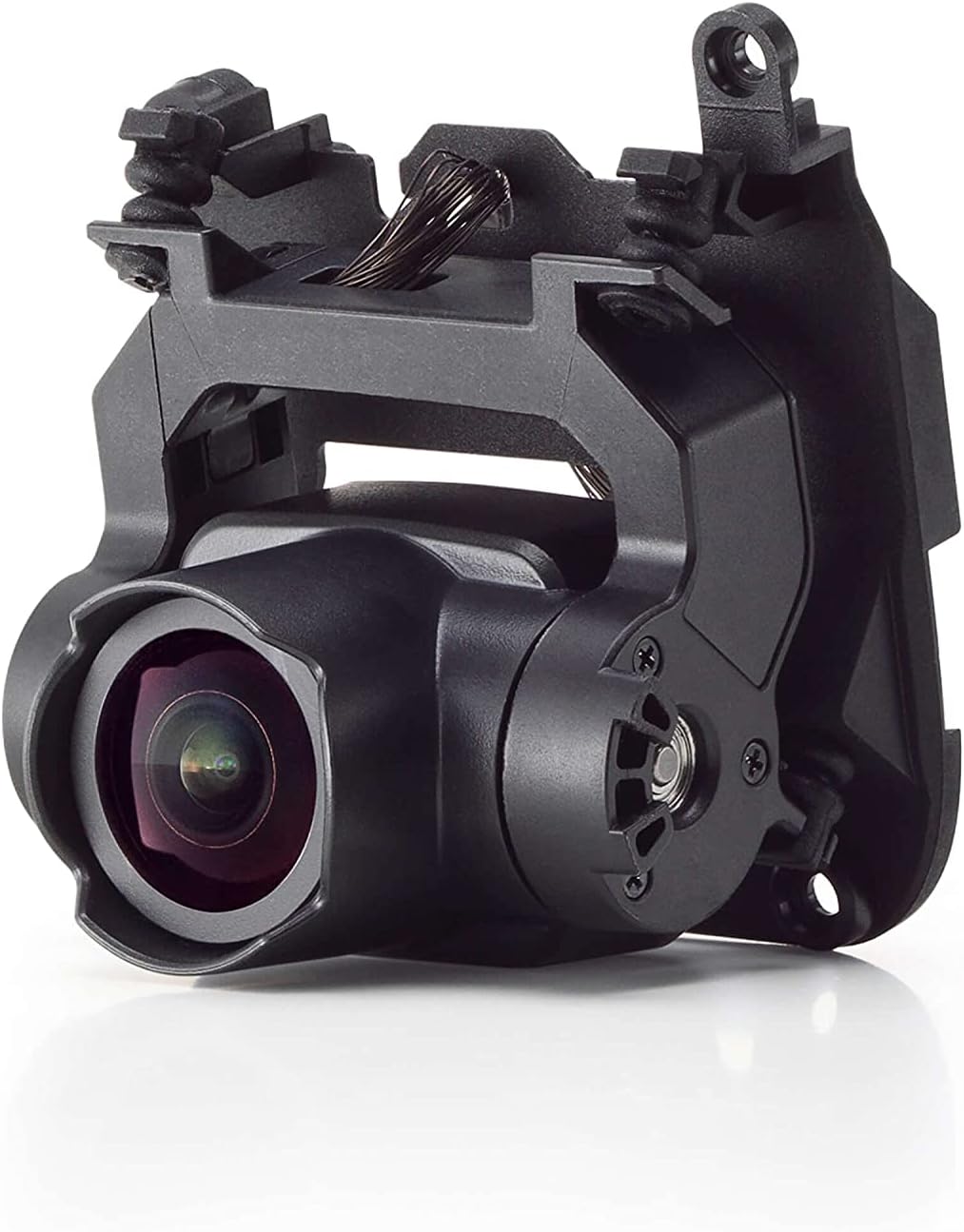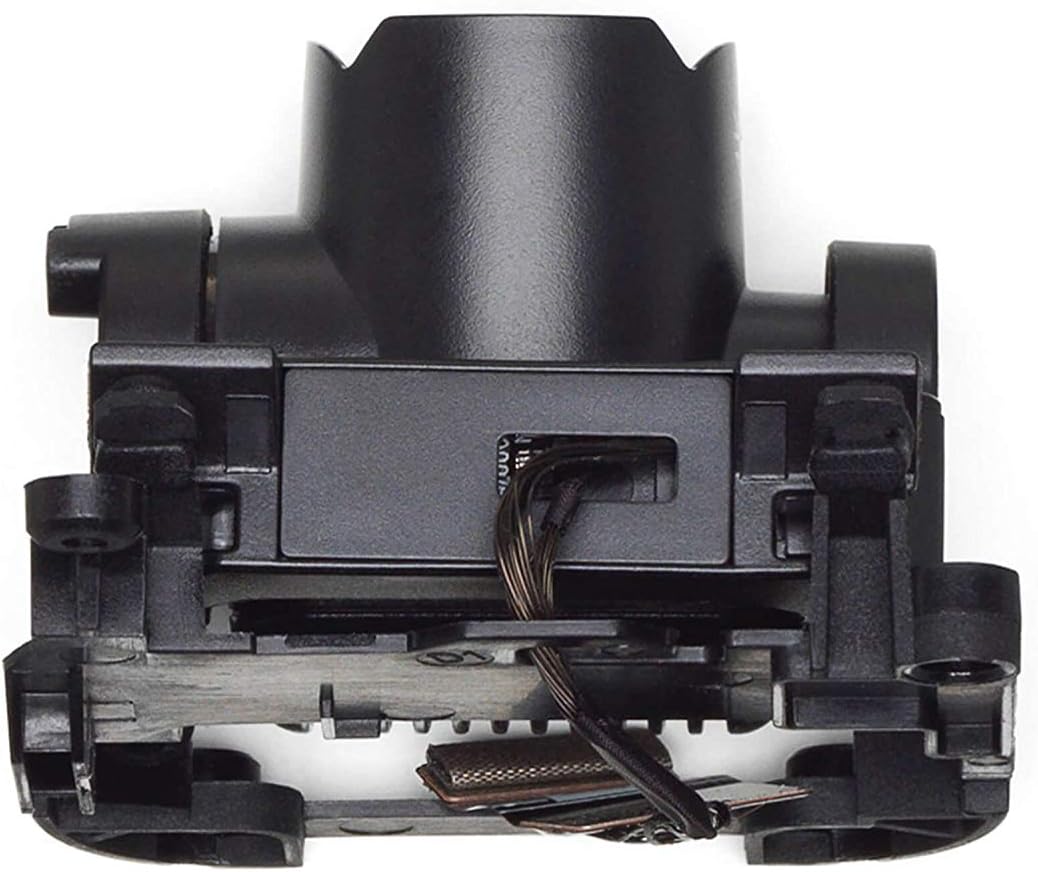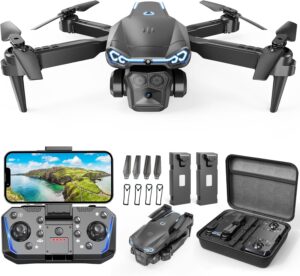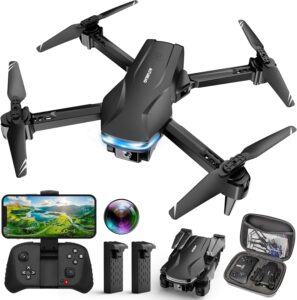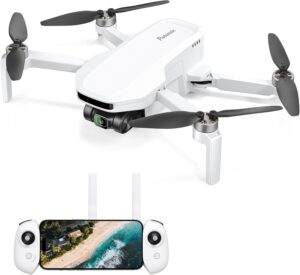Have we ever chased our nerves across the sky and wished the footage looked as smooth as our intentions?
What We’re Reviewing and Why It Matters
We’re talking about the DJI FPV Drone Gimbal Camera, the very heart and face of DJI’s FPV setup. This is the part of the FPV system that does the looking, the steadying, and the storing of proof that yes, we really did thread that tiny gap and didn’t just dream it. It’s designed for use with the DJI FPV Drone only, and that singularity of purpose is part of its charm.
We picked it up because we wanted 4K/60fps footage, RockSteady electronic image stabilization, and 4x slow motion—all without strapping a separate action camera on top and turning our sleek fuselage into a flying stack of pancakes. We wanted to keep the profile clean, the weight down, and the footage useable. This little gimbal camera promised exactly that.
The Big Picture: How It Fits Into the DJI FPV Ecosystem
This gimbal camera isn’t a generalist. It doesn’t make coffee, it won’t bolt onto random frames, and it won’t play nice with drones outside of the DJI FPV family. It’s a specialist part—with the built-in gimbal and stabilization working in concert with the drone—to capture cinematic-feeling FPV footage at up to 4K/60fps.
For those of us used to the raw, wobbling charm of analog FPV, this camera is a different sort of storyteller. It’s like wearing a tuxedo to a backyard barbecue and somehow pulling it off. The footage looks polished, the horizon stays composed, and the shakes we’ve come to regard as “character” quietly excuse themselves.
The Highlights That Actually Matter
We’ll keep it simple because the promise here is straightforward and honest.
- Up to 4K/60fps video
- RockSteady EIS to smooth out the jitters
- Up to 4x slow motion for dramatic moments
- Designed specifically for the DJI FPV Drone
These points are the spine of the product. Everything else is finesse—how it feels to use, how it survives our misjudgments, and whether the footage makes us look more talented than we felt mid-flight.
Quick Reference: Core Specs and Notes
| Feature | What It Is | Why We Care |
|---|---|---|
| Product | DJI FPV Drone Gimbal Camera | The camera and gimbal assembly for the DJI FPV Drone |
| Compatibility | DJI FPV Drone Only | Not meant for other drones; it’s purpose-built |
| Max Resolution | Up to 4K at 60 fps | Practical, crisp, and edit-friendly |
| Stabilization | RockSteady EIS | Smooths out the shakes to save our footage |
| Slow Motion | Up to 4x | Adds drama without extra gear |
| Use Case | FPV recording within DJI system | No extra action camera required |
| Standout Benefit | Integrated gimbal + EIS | Cleaner lines, simpler setup, fewer compromises |
We like charts because they stop us from making it sound more complicated than it needs to be. This camera records, stabilizes, and does slow motion. It’s the combination that makes it compelling.
Design and Build: Small Device, Big Responsibility
We appreciate that this camera’s design doesn’t ask for attention. It’s compact, purposeful, and sits right at the front of the DJI FPV Drone like a polite guest who knows to take off their shoes. The gimbal mechanism does its quiet work while we barrel along, and the camera doesn’t protest when the world gets a little bumpy.
The build feels robust for its size. We won’t claim it’s invincible, because if there’s one thing flying has taught us, it’s that gravity is undefeated. But in normal use—meaning the kind where our landing gear actually lands—the gimbal behaves as if it were made for the job. Because, of course, it was.
Installation and Setup: More Fit Than Fiddle
Since this camera is meant for the DJI FPV Drone, getting it going is refreshingly free of drama. We install it in its intended spot and let the drone and its software handle the handshake. No adapters, no weird hacking, just a plug-and-fly situation that made us suspicious at first because we’re used to working harder.
In practice, setup is less about slotting the camera in and more about confidence. Once we confirm it’s recognized, we do the sensible thing: check settings for resolution, frame rate, and stabilization options. We use plain language for ourselves—if we want sharp and smooth, we choose 4K/60fps with RockSteady on. It’s as close as flight gets to foolproof.
Image Quality: The Look We Wanted Without the Lugging
The core promise is 4K/60fps, and that’s really where this camera shines. We get clarity and smoothness with a look that makes our flights feel intentional rather than chaotic. It’s not trying to be an indie film camera, and it doesn’t need to be. It looks great for FPV, with enough crispness to stand up on a big screen and enough softness in motion to avoid the brittle feel that can happen with high frame rates.
Color rendering is tasteful, the sort of balanced look that gives us room later in post but doesn’t demand we become grading experts. We’re happy handing it to family on a TV and we’re equally happy dropping clips into a quick edit without massaging every highlight and shadow. It’s not overly punchy or washed out. It’s just right for an FPV drone that’s meant to move with purpose.
Stabilization: RockSteady in the Real World
RockSteady EIS earns its name in a way that makes us a little smug. We know we’re not the smoothest pilots every day, yet our footage suggests we’ve achieved inner peace. The electronic stabilization works with the gimbal to iron out the high-frequency jitters that creep into fast flight and the micro-wobbles that show up when we’re bracing against wind.
There’s a point where some stabilizers overcompensate and the world warps at the edges. Here, things stay believable. The horizon sits calmly, props stay out of the frame when we’re flying sensibly, and the result has a purposeful, controlled feel that says “we meant to do that,” even when we definitely didn’t.
Slow Motion: Four Times the Drama, None of the Fuss
We love slow motion because it’s generous. It makes our near-misses feel artful and our near-stops look deliberate. With up to 4x slow motion, the camera lets us stretch a few seconds into a satisfying mini-saga. It’s especially wonderful for reveals—crests of hills, passes through tunnels, or that last-second pull-up that left our heart somewhere above the treeline.
The key is that the slow motion lives comfortably with the rest of the camera’s choices. It’s not a separate mode that forces us to rethink everything. We switch settings, we shoot, and we get sequences that cut together cleanly with our normal footage.
In Flight: How It Feels to Trust the Camera
We’ve flown cameras that made us feel like babysitters. This isn’t one of them. Once we’ve got our settings in place, we just fly. The gimbal doesn’t yaw dramatically, the stabilization doesn’t nag, and the footage coming off the card looks like it came from someone who spent a weekend practicing lines instead of someone who went out after lunch and hoped for the best.
If anything, the camera invites us to be a little bolder. When the visuals stay composed, we’re more willing to try that sweeping approach along a ridge or the quiet curving arc around a tree. It’s not that it makes us better pilots; it makes us feel more supported. There’s a big difference.
Low Light and Tricky Conditions: Managing Expectations Gracefully
We’ll be honest because we appreciate honesty more than we appreciate surprise. Low light is tricky for airborne cameras. The DJI FPV Drone Gimbal Camera does a respectable job of keeping things coherent as the light fades, and RockSteady helps mitigate the ugly shakes that come with turbulent air at dusk.
We treat low-light flights as moments to appreciate transitions rather than to chase deep shadows. If we keep our subjects well-lit, the results feel moody and intentional. If we aim into pitch-dark scenes expecting miracles, we come back with something more like a suggestion than a photograph. That’s physics, not a character flaw.
The Integrated Advantage: Why We Chose Not to Stack Cameras
There’s another way to get good FPV footage: strap a separate action camera on top. We’ve done it, and sometimes it makes sense. But with this gimbal camera, we appreciate the way everything is integrated. The drone stays sleek, our center of gravity behaves, and our drag doesn’t go up like a sailboat that forgot to put its mast away.
Not carrying extra weight matters. We get more predictable handling, easier acceleration, and the sort of nimbleness that makes tight courses feel manageable rather than aspirational. For our kind of flying, simplicity is a real quality-of-life upgrade.
Reliability and Maintenance: Our Quiet Checklist
We’re not fans of midair surprises. The camera has been dependable across normal use, which for us includes breezy days and the occasional unplanned grass inspection. Our routine is simple: we keep the lens clean, watch for dust around the gimbal ring, and double-check settings before we lift.
We don’t treat this like a glass heirloom, but we also don’t use it as a bumper. The better we treat it, the more it returns the favor. That’s not a guarantee; it’s an agreement we’ve made with all our gear, this one included.
Learning Curve: From First Flight to Feeling Fluent
We expected to spend more time learning quirks. Instead, we mostly spent time flying. The interface is straightforward, and the core decisions—resolution, frame rate, stabilization—are things we already speak fluently. The camera makes sensible choices on our behalf and lets us take the wheel when we choose.
We noticed that we started thinking in shots again. Rather than just buzzing around for the sake of motion, we planned sequences: a clean approach, a banked turn, a pass-through, and a reveal. The camera rewards that kind of thinking because it captures those movements with grace.
Editing the Footage: A Pleasant Surprise
We’ve had cameras produce footage that looks fine on the tiny screen and falls apart on a proper monitor. This isn’t that. The 4K/60 captures hold up in editing. We can trim, stabilize a tad more if we’re feeling particular, and grade gently to get the look we like. The base image is tidy, which saves us time.
Slow-motion clips slot nicely into sequences. We mix regular 4K/60 with the 4x slow motion and the story flows. We’re not performing surgery on our footage; we’re making small decisions and enjoying ourselves.
Field Notes: What We Learned the Fun Way
- Shooting 4K/60 as a default feels right for FPV. The movement looks truthful and the detail stays satisfying when we rewatch.
- RockSteady is our always-on ally. We turn it off only if we have a very specific reason in mind, which is rare.
- Slow motion is best when it complements, not saturates. We keep it for moments that benefit from breath.
- We keep our lines clean and our horizon sensible when we want footage that’s easy to work with later.
We didn’t arrive at these conclusions through spreadsheets. We got here by making mistakes and discovering that the camera has a kind way of telling us what actually looks good.
Who It’s For: Finding Our Crowd
We think of this camera as a great fit for anyone flying the DJI FPV Drone who wants clean, stabilized footage without external gear. If the idea of mounting and powering a separate camera makes us sigh, this gimbal camera removes the dread. It’s for the pilot who cares about results and consistency more than tinkering and excess options.
If we already have a workflow built on extra cameras, maybe we stick with that. If we want a tidy setup that looks good and flies predictably, this is what we had in mind.
Where It Impresses Us Most
- Smoothness that feels honest rather than overly processed
- Footage that looks polished straight off the card
- Convenience of staying within the DJI FPV system
- Clear benefits at 4K/60fps with RockSteady
We’re not chasing perfection; we’re chasing reliability and a certain beauty in motion. The camera gives us those without asking for too much in return.
Where We’d Temper Expectations
- Low light remains a place for realism rather than wishful thinking
- It’s designed for the DJI FPV Drone alone, so don’t plan on cross-compatibility
- It’s not trying to be a dedicated cinema camera in disguise
Knowing the edges of a tool makes it easier to use. We stay within its strengths and it rewards us.
Everyday Use: The Rhythm of Flying With It
If we’re honest, the best gear is the stuff we stop thinking about. This gimbal camera becomes invisible in the way a well-tailored jacket makes us forget how we look. We set it, we fly, and we come back with footage we’re happy to show people. No fuss, no contradictions, no nights spent muttering at a timeline and wondering why the sky turned mauve.
That kind of reliability is rare. We notice it most when we try something else and immediately miss this.
Tips That Made a Real Difference
- Choose 4K/60fps as our default for FPV flight. It keeps motion clean and edits easily.
- Keep RockSteady on unless we have a specific stylistic reason not to.
- Use 4x slow motion for emphasis: reveals, passes, and moments with subject movement.
- Keep the lens spotless. Little smudges become big ideas once we’re airborne.
- Plan simple lines. The cleaner we fly, the better the footage looks, even with stabilization.
We don’t like to overthink flight. A few habit shifts made the results much better with very little effort.
Durability in Context: A Partner, Not a Parachute
This is not a superhero camera. It is, however, a sturdy teammate. It’s built for the environment it lives in, and it keeps up with us just fine. We avoid treating it like a crash-test dummy and it rewards us by continuing to make us look clever.
If we do have a less-than-perfect landing, we give it a quick check. The gimbal needs to move freely, and that’s easy to confirm. If it looks wrong, we don’t fly it. We’ve learned this the hard way in other hobbies.
Why We Prefer This to a Heavier Setup
There’s a joy in simplicity we never appreciated until our backpacks started to feel like gym memberships. Not mounting extra cameras means fewer trade-offs. There’s less to charge, less to lose, less to remember, and less to worry about mid-flight. Our flights feel cleaner, and our footage is anchored to what we actually did, not to how many accessories we brought with us.
We find we fly longer and with more intention when there’s less to juggle. The DJI FPV Drone Gimbal Camera’s value lives in that simplicity as much as in its video quality.
What It’s Like Sharing the Footage
This is the softest metric, and maybe the most honest. When we show our clips to people, they focus on what we did, not on how wobbly it looked. They talk about the feeling of flying, the perspective, the place. We don’t find ourselves apologizing for shakes or explaining why the sharpness falls apart if you look too closely.
Our favorite kind of praise is the quiet nod, the “oh, that’s nice,” the moment of rewatching a few seconds just to feel the drop again. This camera gives us those moments.
Value and Longevity
When gear lives inside a system, its worth grows with time spent using it. The DJI FPV Drone Gimbal Camera benefits from DJI’s approach to integration. We’re not cobbling together mismatched pieces; we’re using the part designed for the job. That matters for stability, updates, and the general sense of not being on our own.
We measure value in hours of reliable footage and in how many times we didn’t have to redo a flight because the camera decided the horizon should be somewhere else. By that measure, we’re pleased.
Real-World Scenarios We Keep Returning To
- Coastal runs with constant wind: RockSteady smooths the inevitable bumps.
- Mountain approaches where changes in air density and turbulence test our finesse: the footage stays confident.
- Urban fly-throughs where tight spaces reward accurate lines: the stabilization helps keep motion readable and watchable.
In each of these, the camera’s job is to maintain composure. It does that, and it does it without calling attention to itself.
What We Wish We’d Known on Day One
- Keep our default settings simple. There’s no prize for complexity.
- Save slow motion for moments that benefit from it, rather than keeping it on all the time.
- Flying smoother is still the greatest stabilizer. RockSteady is a helper, not a magician.
- A little preflight habit—wipe lens, check gimbal freedom—saves us from ugly surprises.
We suspect we always knew these truths, but we needed a friendly camera to remind us.
Comparison in Spirit, Not Spec Sheets
We won’t pit this against every other camera on the market because that’s not the point. Within its intended home—the DJI FPV Drone—this gimbal camera is the elegant, coherent choice. It’s not trying to outmuscle dedicated action cameras strapped on with extra mounts. It’s offering a balance: good image quality, up to 4K/60fps, practical slow motion, and RockSteady stabilization, all without extra bulk.
Sometimes the best choice is the one that harmonizes with what we already have.
Travel and Packing: The Relief of Fewer Objects
We love not carrying a nest of mounts, screws, and brackets. We love not having to remember which battery charges which thing and whether we brought the correct cable to summon the god of firmware. The DJI FPV Drone Gimbal Camera is part of the drone, so when we carry the drone, we carry the camera. Simple as that.
We get more time to think about where we’re going to fly and less time playing logistics manager. That alone is worth something precious.
Sound, Vibration, and the Invisible Work of Stabilization
No one buys an FPV camera for its audio. Still, the feeling of the footage—the way the motion reads—is its own kind of sound. RockSteady reduces the little micro-rattles that can make videos feel tense. The gimbal takes care of small attitude fluctuations so the world doesn’t constantly wobble.
The result is a sense of flow. It’s not glassy and fake; it’s confident. We enjoy watching our own clips again because they feel like the flights we meant to have.
A Note on Expectations for Cinematic Work
If our goal is a meticulously planned aerial sequence with heavy grading and a very specific visual language, we might have use for those bigger, heavier setups. But most of the time, the DJI FPV Drone Gimbal Camera strikes a thoughtful balance. It gives us clean, stable 4K/60 footage that looks great right away, and it gives us enough flexibility to nudge the look in post.
We like tools that encourage us to fly more and fuss less. This is one of them.
Confidence in Tight Spaces
Flying close to objects is where FPV becomes more than a wide shot. The steadiness of this camera helps our motion read clearly even when subjects are just a few feet away. Instead of telling a story about the whole city, we can tell a story about one alleyway, one tree, one path between two buildings.
It helps that we know what we’re going to get: a stable, watchable shot. That confidence changes how we fly.
How It Handles Speed
Speed is where stabilization can turn into a character actor chewing the scenery. We’re impressed that RockSteady maintains composure without smearing or turning edges to mush. Sprinting over grass, cruising along a road, or dipping along a ridgeline, the camera keeps motion natural.
We still plan our shots as if we have to get them right in-camera. It turns out that’s the best way to treat any camera, stabilized or not.
The 4K/60 Sweet Spot
There’s a reason we keep coming back to 4K/60 as our daily driver. It’s enough resolution to look crisp, enough frames to make motion luxurious, and forgiving in edits. The DJI FPV Drone Gimbal Camera was clearly designed with that sweet spot in mind. We’re glad, because it makes us feel like we’re using it the way it was meant to be used.
We don’t chase checkboxes here; we chase the kind of flight that looks as good as it feels. This camera supports that.
What We Tell Friends Who Ask
We tell them this: if you have the DJI FPV Drone and you want footage that makes you smile without adding bulk or complexity, get this gimbal camera. Use 4K/60, keep RockSteady on, and save slow motion for the moments you want to underline. Clean your lens like it’s a ritual and plan lines that are simple and intentional. You’ll like what you get.
And if you want to bolt on an extra camera for specific projects, that’s fine too. We just find ourselves not needing to.
Pros and Cons We Actually Feel
- Pros:
- Up to 4K/60fps looks clean and confident.
- RockSteady EIS delivers smooth footage without feeling artificial.
- 4x slow motion adds drama with no extra gear.
- Integrated design simplifies flying and keeps the drone nimble.
- Footage is edit-friendly right out of the camera.
- Cons:
- It’s for the DJI FPV Drone only; not a general-purpose module.
- Low light is decent but not magical; we keep expectations grounded.
- Not a replacement for high-end cinema workflows when those are required.
We can live with these trade-offs because they’re honest and predictable.
How It Shapes Our Flying Style
This camera nudges us toward smoother, longer lines and reveals that take a breath. We still go for proximity, but we do it with more intention, knowing the end result will hold up. We’re less likely to rush a flight because we’re less worried about equipment gremlins.
We’d call that a quiet victory. A camera that makes us better by encouraging better habits without scolding us when we wobble—that’s a keeper.
The Emotional Part We Don’t Usually Admit
Sometimes a piece of gear gives us permission. Permission to try a different line, to take the long road in, to climb a little higher and sweep a little wider. The DJI FPV Drone Gimbal Camera does that by being the reliable friend in the front row. It records without moodiness. It remembers what we saw without exaggerating or diminishing it.
That reliability frees up a corner of our brain. We like what it does to our flying—and to our patience.
Endurance and Consistency Over Time
As flights pile up, what we notice most is the consistency. On windy days and calm ones, early mornings and late afternoons, the footage feels predictably good. That’s more valuable than a rare, spectacular clip surrounded by disappointments. We want a body of work that holds together.
The more we use it, the more we appreciate the way it supports that goal.
The Bottom Line, Finally
We bought the DJI FPV Drone Gimbal Camera because we wanted stabilized, high-quality footage at up to 4K/60fps without photography turning into a balancing act. We got exactly that, with RockSteady EIS smoothing the bumps and 4x slow motion giving us drama when we ask for it. It’s built specifically for the DJI FPV Drone, and that focus shows up in how effortless it feels to use.
We recommend it wholeheartedly to anyone who wants their FPV footage to look composed and ready-to-share without extra gear. If we measure success by how often we choose to fly with it and how happy we are with the results, this is one of the easiest decisions we’ve made in a while.
Final Thoughts We Keep Coming Back To
- We fly better when we’re not burdened by setup.
- We edit faster when the footage is already steady and crisp.
- We enjoy ourselves more when our tools meet us halfway.
The DJI FPV Drone Gimbal Camera meets us more than halfway. It shows up, does its job with grace, and quietly makes our flights feel like stories worth telling.
Disclosure: As an Amazon Associate, I earn from qualifying purchases.
